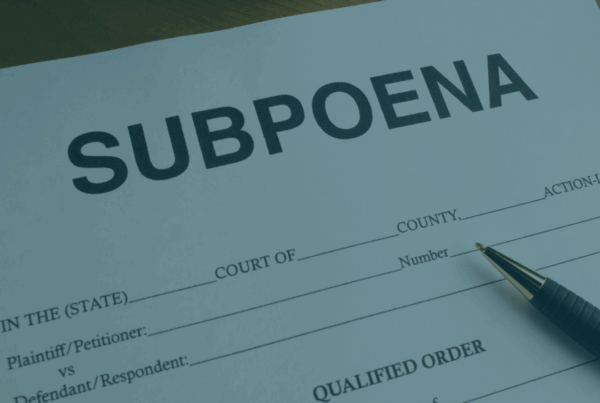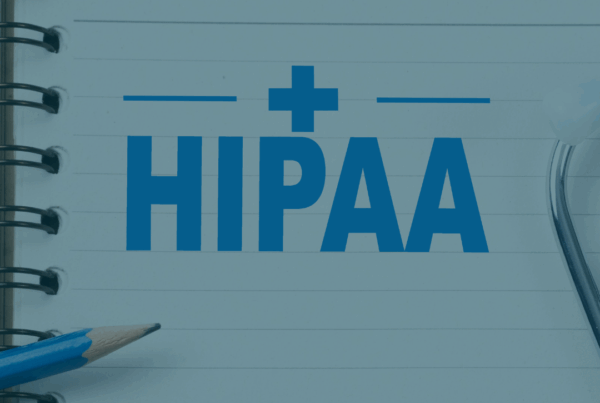Health-related litigation has become an increasingly complex process. Navigating the world of personal injury, medical malpractice, workers’ compensation, and other actions involving health-related claims has proven to be a challenge for attorneys and insurance companies involved in managing claims. The ultimate question is identifying and obtaining all relevant medical records when clients often can’t recall their treatment or medical history accurately. Obtaining a comprehensive history usually directly impacts how a claim is managed and its inevitable outcome. How can an extensive medical history be obtained? The answer lies in a systematic process called medical canvassing – a strategic investigative process that occurs before requesting official medical records.
Who Needs Medical Canvassing?
Law firms handling health-related claims where medical history and records prove vital to establishing liability, damages, causation, or timeliness typically request medical canvases to manage their claims. This process is completed before requesting official medical records.
- Personal Injury Attorneys representing clients in injury-related claims, including workplace incidents and product liability cases where pre-existing conditions and post-incident treatment must be thoroughly documented.
- Workers’ Compensation Attorneys dealing with work-related injuries where distinguishing between work-related conditions and pre-existing (or non-workplace related claims) is essential for proving that the injury occurred within the scope of an injured worker’s essential job functions.
- Medical Malpractice Attorneys who need to establish a comprehensive baseline of a patient’s health status before the alleged negligent care occurred. This often includes documenting a full scope of subsequent treatment and corresponding complications.
- Insurance Defense Attorneys seeking to identify pre-existing conditions that may limit liability or reduce damage awards in personal injury cases.
- Other Health-Related Attorneys (i.e., Social Security Disability, Employment, or Labor Law Attorneys that may need to compile extensive medical evidence to support disability claims, or employment-related matters as part of a work-related injury).
What is a Medical Canvass?
Medical canvassing is designed to identify a comprehensive list of all healthcare providers, facilities, and treatments where a client has received medical care. Often, clients forget where they were treated and cannot recall specific details about diagnoses, treatments, or prescribed medications. The medical canvass process typically involves a combination of several actions, including, but not limited to:
1) Interviewing clients who go beyond basic recall of the places they received treatment.
2) Analyzing a geographic location involving areas where the client lives and works to identify nearby facilities they may have used.
3) Reviewing insurance records to identify providers who have submitted claims, revealing treatment clients may have forgotten.
4) Review prescription databases to identify physicians and uncover medications prescribed.
5) Reviewing hospital database systems, revealing possible medical treatment.
Where is a Medical Canvass Most Essential?
While not every claim or case will require a medical canvass, there are specific scenarios where one is critical. For example, when analyzing a specific geographic region (e.g., multi-state cases, rural areas, major metropolitan areas, military or government settings, or long-term cases), medical canvassing can provide a comprehensive medical history when it is unclear or when Attorneys are having difficulty establishing timelines of the medical treatment.
Why is a Medical Canvass Even Necessary?
The strategic importance of a medical canvass extends beyond the simple concept of thoroughness. It serves several vital functions that can make or break a case. These include, but are not limited to:
1) Discovery Issues – Courts expect Attorneys to make a reasonable effort to obtain medical history and determine the accuracy of the information relating to the alleged injury. Incomplete information can result in significant discovery violations.
2) Preventing Surprises Related to Damages – When opposing counsel discovers damaging pre-existing conditions or contradictory medical evidence that undermines your client’s claims, it can have a detrimental effect on the outcome of the claim, including how much can be claimed for damages.
3) Establishing Credibility – Attorneys who adequately prepare and have thorough information build credibility with judges and opposing counsel throughout the litigation process.
4) Accurately Determining Damage Recovery – Clearly distinguishing between existing and pre-existing conditions and incident-related injuries yields a more accurate and precise calculation of damages, and
5) Supporting Causation Arguments – A comprehensive medical history makes causation arguments easier to prove. This is especially true in complex medical cases, where establishing a medical timeline and demonstrating changes in health status are pivotal to those causation claims.
How to Conduct a Medical Canvass
You can perform a medical canvass using a strategic plan with specific attention to detail.
- Comprehensive Client Interviews – This will require you to develop a framework and timeline to help clients recall all events from the date of injury and beyond, including treatment history.
- Cross-Reference Multiple Information Sources – Relying on client recollection alone is not prudent. It is imperative to rely on trusted information such as insurance records, medical and prescription histories, credit reports, etc. Clients often forget routine or maintenance care from their medical providers.
- Conduct a Thorough Geographical Analysis – Consider researching healthcare facilities where clients live and work. If clients live or work in rural areas, consider broadening your search. Pay particular attention to the employer’s healthcare providers’ preferred provider networks, as clients may have traveled to those locations to receive treatment.
- Research Databases – Consider reviewing and analyzing insurance claim databases or lawsuit websites that can provide current or previous claim filings.
- Document the Process Thoroughly – Maintaining detailed records of your canvassing efforts is critical, including sources checked, contacts made, results obtained, and notes pertinent to your case. This documentation can be used as reasonable discovery efforts, and proper medical history and treatment investigation.
- Establish and Maintain Best Practices and Quality Control Measures – To avoid collecting incomplete information and records, it is important to establish a process for information gathering and managing the information through a Quality Control process. This will assist you in duplicating the process for future claims management and permit higher claim volumes without reducing efficiency.
When Should You Hire a Professional Service to Conduct Medical Canvassing?
If you have never conducted a medical canvassing, do not have an established process, a current best practice, a quality control declaration, or do not have time, it might be best to consult with professional experts. While some law firms and adjusters attempt to handle medical canvassing internally, the complexity and stakes involved often cause errors or information to be missing, hence justifying the outsourcing to a reputable vendor who can provide these services to you promptly and professionally.
There are some key advantages to professional canvassing. Namely, the professionals conducting canvassing are familiar with the changes in the healthcare system, provider network modifications, and database access, which would be increasingly time-consuming and fiscally costly to maintain at an individual law firm or insurance carrier level. Moreover, requesting information, including clarifying treatment, can be a delicate conversation. Navigating an unresponsive or non-compliant facility requires a specific process, and there is no one-size-fits-all approach that proves to be successful. Finally, numerous bureaucratic nuances may or may not apply, hindering the appropriate information collection.
Finally, outsourcing medical canvassing to a professional entity ensures a systematic approach and quality control measures to provide complete, accurate, and comprehensive identification of relevant medical records.
Medical Canvassing as a Precursor to Ordering Medical Records
It is important to remember that a medical canvass is usually obtained before requesting medical records. Because canvases help you identify the relevant medical treatment and history, you will need to know this precise information to establish the treatment timelines for the injury, distinguish between existing and pre-existing conditions, and help establish causation in the case. The medical canvass report will narrow the need to request records only to the verified facilities where treatment was received. Once all relevant medical information regarding treatment has been established, you can request those records, within the established limited scope, which will expedite the record retrieval process and save time and financial costs.
What about HIPAA?
Common questions often revolve around how a medical canvassing agent obtains medical information without a signed HIPAA release or authorization by a claimant, patient, or injured worker. It is important to distinguish a medical canvass from a medical record request. A canvass often confirms that the claimant received treatment from a facility on a particular date. Typically, a name and date of birth are furnished to the facility, and they can confirm whether treatment was administered to the claimant. This also means that since no protected health information (PHI) is obtained, a signed HIPAA release is not necessary. No medical records are being requested or produced. That is a clear distinction from a medical record request, which does request official medical records (including treatment, diagnoses, hospital records, prescriptions, etc.). All of that is considered protected health information (PHI), and according to the Federal HIPAA legislation, a signed release or HIPAA authorization is required for a custodian of records to furnish medical records.
In Summary
Medical canvassing proves to be a necessary first step in the information gathering stage and discovery process of a litigated health-related claim because it forms the strategic foundation upon which medical cases are built. By appropriately identifying the relevant healthcare treatment before requesting the medical records, attorneys can avoid discovery sanctions, affect the calculation of damages, and build a comprehensive medical outline that supports successful case resolution.
In addition to asking whether a medical canvass is necessary, it is often a question of whether attorneys have the resources and expertise to conduct it effectively. Healthcare systems are becoming interconnected and increasingly complex to navigate, and the strategic value of a comprehensive medical canvass is only growing and proving to be essential in more cases.
Medical canvassing is no longer optional – it’s a best practice that strengthens litigation strategy, streamlines records requests, and supports favorable case resolutions.







